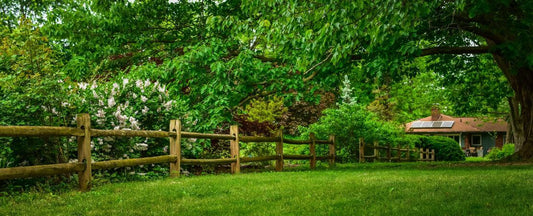Guide to Growing and Caring for Oakleaf Hydrangeas

With Four Seasons of Interest, Oakleaf Hydrangeas Are Garden Superstars
Oakleaf hydrangeas, or Hydrangea quercifolia, are beloved for their distinctive, oak-shaped leaves and spectacular flower clusters. Known for their four-season interest, these shrubs are a versatile addition to your garden. This guide will help you identify oakleaf hydrangea bushes and provide essential tips and instructions on how to care for and grow them.
Identifying Oakleaf Hydrangeas
Oakleaf hydrangeas are easily recognizable by their unique foliage and striking flower heads. The leaves resemble those of an oak tree, providing rich texture and color to the garden throughout the seasons. In autumn, the leaves turn stunning shades of red, orange, and purple, adding to their appeal.
Tips for planting and growing Oakleaf Hydrangea from Jess @YouCanDoItGardening
Key Identifying Features
Leaf Shape: Large, lobed leaves similar to oak leaves.
Flower Shape: Cone-shaped clusters of flowers.
Color Transition: Flowers typically start white and fade to pink or purple.
Growth Habit: Can range from compact shrubs to larger, spreading forms.
Popular Varieties of Oakleaf Hydrangeas
Oakleaf hydrangeas come in various cultivars, each with unique characteristics. Wayside Gardens offers several attractive oakleaf hydrangea varieties:
Snow Queen Hydrangea (Hydrangea quercifolia 'Snow Queen')
- Known for its large, white flower clusters that gradually turn pink.
- Upright growth habit, reaching up to 6-8 feet tall and wide.
Alice Hydrangea (Hydrangea quercifolia 'Alice')
- Larger variety with massive flower clusters and robust foliage.
- Can grow up to 10-12 feet tall and wide, making it a dramatic garden feature.
Sikes Dwarf Hydrangea (Hydrangea quercifolia 'Sikes Dwarf')
- Dwarf variety with dense, white flower clusters that age to pink.
- Grows up to 3 feet tall and wide, perfect for smaller gardens or containers.
Gatsby Moon® Hydrangea (Hydrangea quercifolia 'Gatsby Moon')
- Features double white flowers that remain white longer before turning pink.
- Grows up to 6-8 feet tall and wide, offering a unique bloom form.
Planting Oakleaf Hydrangeas
Selecting the right location and planting at the optimal time are crucial for the success of your oakleaf hydrangeas.
Best Planting Time
Plant in early spring or fall when the weather is cooler.
Site Selection
Sunlight: Oakleaf hydrangeas prefer partial shade to full shade. In cooler climates, they can tolerate more sun, but in warmer regions, provide afternoon shade.
Soil: They thrive in well-drained, fertile soil with a slightly acidic to neutral pH.
Planting Steps
- Prepare the Site: Dig a hole twice as wide and the same depth as the root ball.
- Amend the Soil: Incorporate compost or well-rotted manure to enhance soil fertility and drainage.
- Planting: Place the hydrangea in the hole, ensuring the top of the root ball is level with the surrounding soil. Backfill the hole with soil, pressing gently to remove air pockets.
- Watering: Water thoroughly after planting to help settle the soil.
Caring for Oakleaf Hydrangeas
The lowest maintenance hydrangea, you can leave oakleaf hydrangeas alone, only pruning to maintain your desired shape or to remove dead or damaged branches. Oakleaf hydrangeas are also native to areas of the US, too. Follow these care tips to ensure your oakleaf hydrangeas remain healthy and vibrant.
Watering
- Keep the soil consistently moist, especially during the first year after planting.
- Deep watering once a week is preferable to frequent shallow watering.
Fertilizing
- Apply a balanced, slow-release fertilizer in early spring to promote healthy growth and blooms.
Pruning
- Prune in late winter or early spring to remove any dead or damaged wood and shape the plant.
- For mature plants, selectively remove some of the oldest stems to encourage new growth and improve air circulation.
Mulching
- Apply a 2-3 inch layer of mulch around the base of the plant to retain moisture and regulate soil temperature.
Common Issues and Solutions
Pests and Diseases
Oakleaf hydrangeas are relatively resistant to pests and diseases, but they can occasionally be affected by leaf spot or powdery mildew.
Ensure good air circulation and avoid overhead watering to prevent fungal diseases. Treat any infestations with appropriate fungicides or insecticides as needed.
Winter Protection
While hardy in zones 5-9, young plants may benefit from a layer of mulch or straw to protect the roots from extreme cold.
Enhancing Your Garden with Oakleaf Hydrangeas
Oakleaf hydrangeas provide year-round interest and can be used in various garden designs. Their stunning foliage and long-lasting blooms make them a focal point in any landscape.
Landscape Uses
- Borders:Their tall, arching branches and large blooms make them perfect for adding height and structure to garden borders.
- Containers:Compact varieties like Ruby Slippers and Munchkin are excellent choices for container gardening.
- Hedges:Larger varieties like Alice can be planted in rows to create beautiful, flowering hedges.
By following these tips and incorporating oakleaf hydrangeas into your garden, you can enjoy their vibrant beauty and resilience year after year. For more detailed information on planting and care, refer to the Hydrangea Planting and General Care Guide and the How to Prune Hydrangea Plants blog on WaysideGardens.com.





